
Why Ontario is experiencing more floods — and what we can do about it
How can we limit damage from disasters like the 2024 Toronto floods? In this explainer...
This is the sixth part of Carbon Cache, an ongoing series about nature-based climate solutions.
The millennia-old red cedars of the Great Bear Rainforest, and the western hemlock, Douglas fir and Sitka spruce rubbing at their shoulders, capture a million tonnes of carbon from the atmosphere each year, holding onto it as long as the giant trees stand.
Since 2012, the work of the trees and plants of B.C.’s coastal rainforest have been generating credits — one credit for every tonne of carbon sequestered — that are bought by the B.C. government, companies and individuals wanting to offset their carbon emissions.
The goal is to create an economy that doesn’t rely on cutting down these carbon-sequestering senior citizens. In turn, the carbon credit revenue has helped to fund Guardian Watchmen programs in nine coastal First Nations. These Indigenous guardians patrol the landscape and conduct fisheries management and species monitoring.
The Great Bear Rainforest carbon project is the blueprint for carbon offset programs in Canada. And with nature-based climate solutions gaining traction globally, quantifying the amount of carbon Canada’s natural landscapes hold is an increasingly important task.
A study published in the Proceedings of the National Academy of Sciences in 2017 found the simple act of preserving wetlands, forests and grasslands could provide more than one-third of the emissions reductions needed to stabilize global temperature increases below 2 C by 2030 under the Paris Accord.
The federal government is now working to develop a national offset standard for the first time. While offset programs already exist in some provinces and via voluntary carbon markets, the federal standard will mark a new era of carbon markets in Canada.
Another big change is firing up the potential for carbon markets, too: Canada is now including nature-based emissions and sequestration in its biennial reports to the United Nations.
“Previous to 2020’s biennial report, we did not include any nature-based emissions or sequestration in our carbon footprint that we report to the Paris agreement or to Canadians,” Joseph Pallant, director of climate innovation at Ecotrust Canada, told The Narwhal.
“How crazy is that? This is like six months ago that this has been changed.”
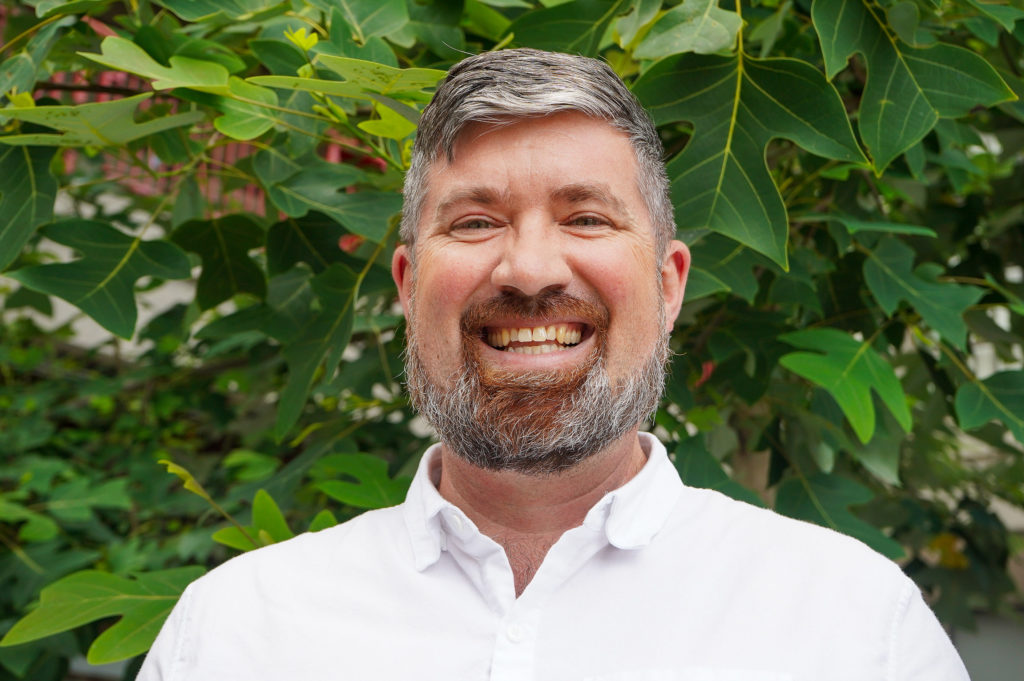
Joseph Pallant, director of climate innovation at Ecotrust Canada, says the development of a national offset standard creates a major incentive for governments to protect nature.
What that means in practice is that when humans impact natural landscapes (by, say, cutting down a forest or destroying a wetland), those emissions are now counted as part of Canada’s carbon footprint.
Pallant said that while some people aren’t fond of the idea of commodifying nature, the development of a national offset standard, along with the inclusion of nature-based emissions in Canada’s climate reports, creates a major incentive for governments to protect nature.
For example, Pallant is working on a forest carbon economy fund that will allow communities to unlock the value of carbon stored on the landscape, offering them options for revenue beyond logging and simultaneously helping Canada meet its climate goals.
“The goal is to make improvements in nature actually affect the Canadian federal government’s bottom line,” he said.
Carbon offsets could also “massively” help fund new Indigenous Protected Areas, according to Pallant.
While the Great Bear Rainforest is the leading example of how carbon offsets can work, it’s also an example of how things can get, well, complicated.
The Great Bear agreement has faced challenges in recent years, with the credits established in the forest struggling to find buyers. Across the country, various carbon offset programs have so far failed to get off the ground due to lack of demand for offsets and hefty costs to get projects underway.
Here’s what you need to know about carbon offsets and nature-based climate solutions.
Nature-based climate solutions can look like a lot of different things in practice: carbon offsets from forest protection, designation of Indigenous Protected and Conserved Areas and national parks, restoring coastal ecosystems like kelp forests or ranchers earning carbon credits for maintaining native grasslands on their properties, to name just a few.
What brings all of these concepts together is the ultimate goal of protecting or restoring nature in part due to its ability to store carbon.
Lisa Young — executive director of Unama’ki Institute of Natural Resources, which represents five Mi’kmaq communities on Cape Breton Island — noted that Indigenous people have been practising conservation for thousands of years but new opportunities are emerging through Canada’s desire to reduce emissions and protect biodiversity.
“Not only are they exploring those kinds of concepts around green economy that will also mitigate the impacts of what we’re doing to the climate, but also the land itself is healing that as well,” she says. “It’s a two-pronged kind of thing.”
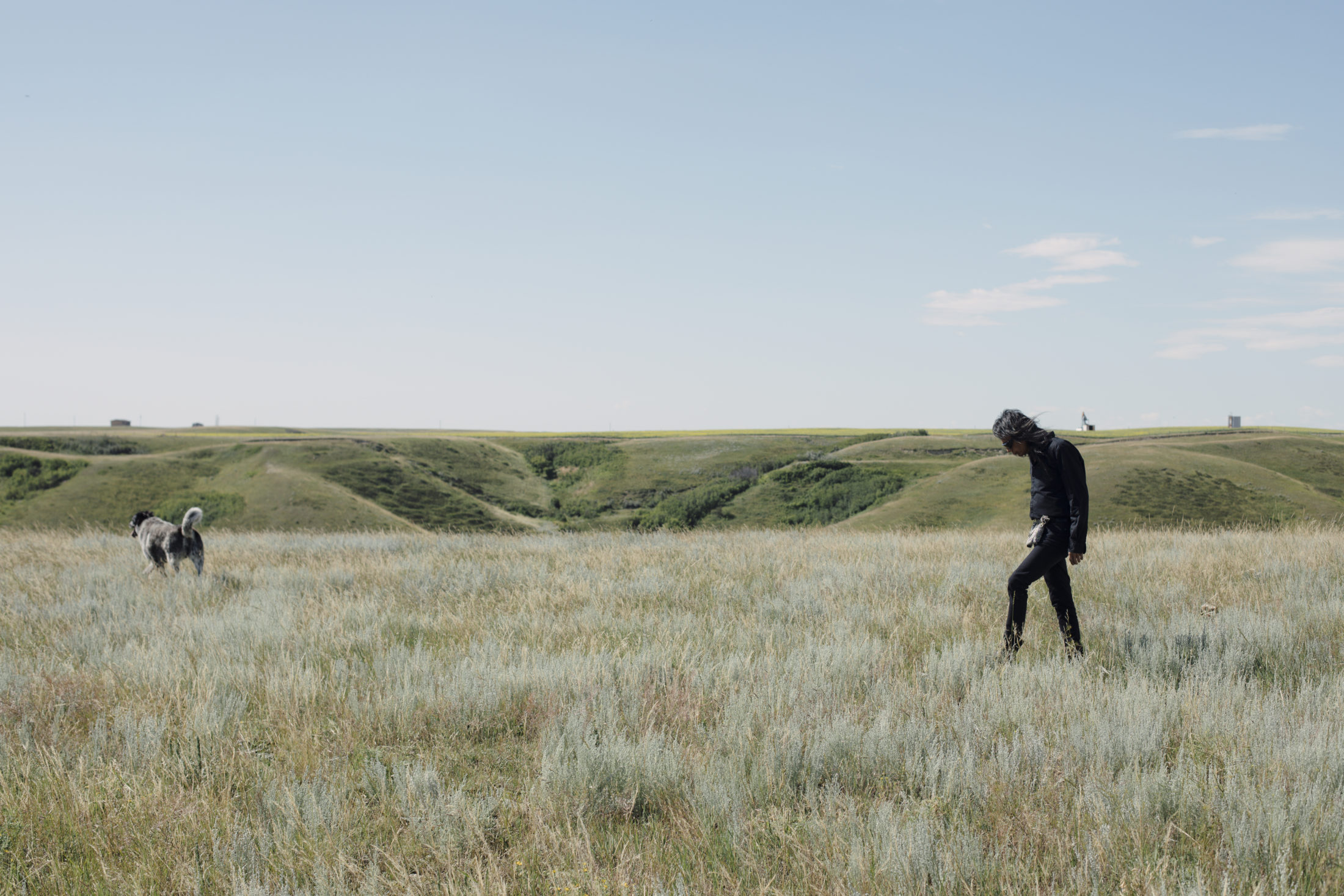
Api’soomaahka, or William Singer, is working with Blood Tribe Land Management in southern Alberta to convert his cultivated land back to native grasslands. Photo: Amber Bracken / The Narwhal
One of the most fundamental issues at play around carbon offset projects is how greenhouse gas emissions are counted — and, more crucially, not counted.
“Nature is currently managed as a resource,” said Larry Sault, president and CEO of Anwaatin, a company that works with Indigenous communities on carbon sequestration projects. “Its value is only realized by its destruction.”
The concept is fairly straightforward: identify and protect an ecosystem that would otherwise lose its carbon sink functionality due to human impacts, calculate the amount of carbon presently or potentially stored in it and sell credits for the carbon the ecosystem sequesters to other entities to offset their own emissions.
Offsetting can include improved management practices of forests, farmlands, grasslands and wetlands, among others.
The federal government’s 2020 design paper for options for a federal greenhouse gas offset system requires offsets to be quantifiable, additional to a business-as-usual scenario, incremental to other incentives and verifiable.
Carbon credits garnered from offsetting can be sold in two types of carbon market: regulatory compliance or voluntary. On the regulated market, buyers are purchasing credits because of requirements by law to keep their carbon emissions below a certain threshold. If they fail to stay below that threshold, they can buy credits to offset their overage. On the voluntary market, credits are purchased voluntarily — say, to offset the emissions (and guilt) from a flight or a conference.
In terms of how credits are verified on those two markets, there isn’t a major difference, Pallant said. Some voluntary markets have more rigorous standards than some regulatory compliance markets, and vice-versa.
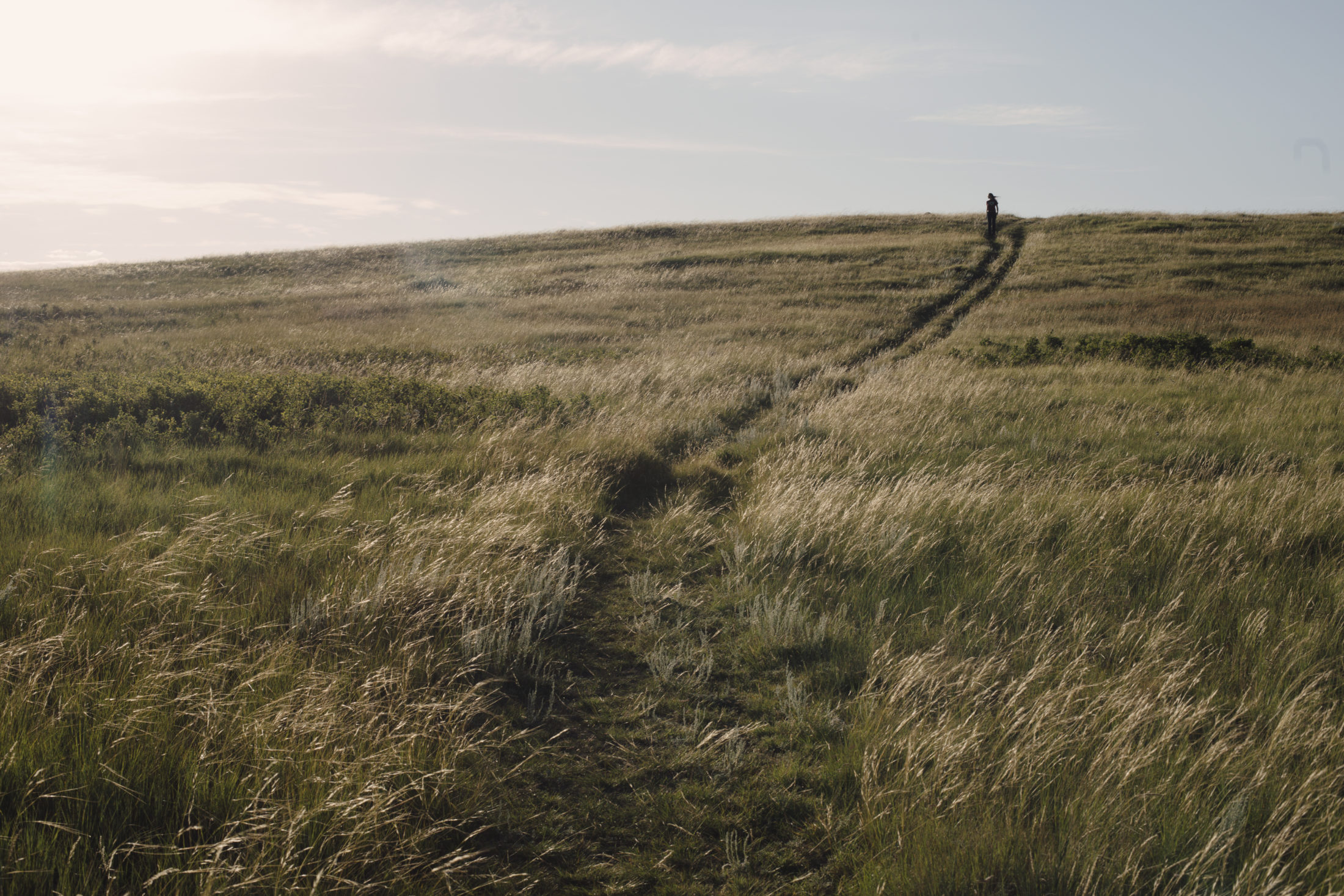
In October 2019, the carbon offset registry Climate Action Reserve adopted the Canada Grassland Protocol for the voluntary market. The Canadian Forage and Grasslands Association, which supported the creation of the protocol, is now evaluating the protocol by working with about 50 private land owners through a four-year pilot program. Photo: Amber Bracken / The Narwhal
Currently, the B.C. government is the only province or territory that has committed to maintaining zero emissions, meaning the province itself purchases a significant portion of the made-in-B.C. carbon credits.
“It’s something other governments should pick up,” Pallant said. “It’s something where they can put their money where their mouth is and, importantly, it can seed the field for development of the other systems.”
The B.C. government recently announced a new five-year agreement to buy carbon credits from the Great Bear Rainforest, for example.
“By the government saying ‘we’re going to backstop demand’ and guarantee there’s demand for around 750,000 tonnes of emissions reductions per year in B.C. … that makes it worthwhile to set up a carbon offset system … and it creates a business case for Indigenous communities like the Coastal First Nations,” Pallant said.
As evidenced by the Great Bear agreement, this system can help build an alternative economy to resource extraction. Regulations that limit the amount of carbon industry can emit, such as cap-and-trade systems, also create demand because those companies that are unable to stay below the limit are forced to buy offsets.
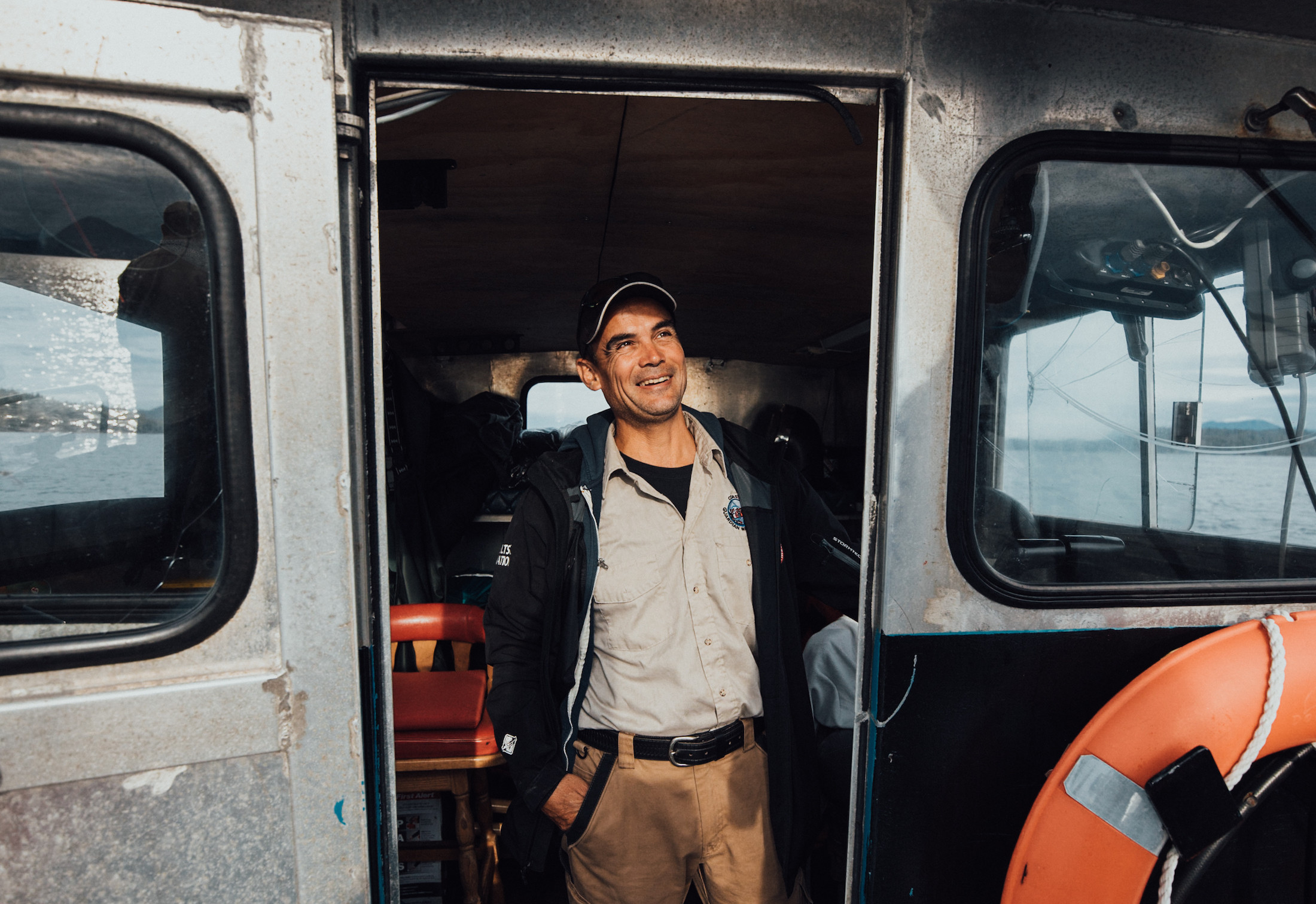
Jordan Wilson, a Heiltsuk Coastal Guardian Watchman, aboard one of the nation’s monitoring vessels in the Great Bear Rainforest. Photo: Louise Whitehouse / The Narwhal
In Alberta, for example, there is a regulated market for carbon credits for companies that have to reduce their emissions under the province’s Carbon Competitiveness Incentive Regulation, which targets companies that emit 100,000 tonnes of carbon per year or more.
While B.C.’s government has committed to net-zero emissions, the cancellation of the province’s cap-and-trade program has been the source of the Coastal First Nations’ struggle to find buyers outside of government for Great Bear carbon credits. The province backed out of its cap-and-trade plan in 2011, meaning there’s no requirement for companies to keep carbon emissions below a certain threshold, so offsets are only sold to the government and on a voluntary basis to companies — resulting in a huge backlog of unsold credits.
Similarly, the cancellation of Ontario’s cap-and-trade system under Premier Doug Ford’s government in 2018 meant aspiring projects had only the voluntary market to sell into. It was a move that swiftly immobilized carbon offset programs that were in the works, said Jason Rasevych, president of the Anishnawbe Business Professional Association, which is working with several Ontario First Nations to develop carbon offset programs.
Putting a price on carbon stored by nature is an awfully complex task that has been attempted since the Rio Summit in 1992 and Kyoto Protocol in 1997 with varying success. Jessica Dempsey, a UBC geography professor and author of Enterprising Nature, said that most forest offset proposals have “failed miserably.”
“It seems simple: let’s just pay people not to cut down forests or clear bogs and then we’ll create an economic interest in it and it won’t happen,” she said. “But in reality, setting all of that up and monitoring it is really complicated and bureaucratic and costly and politically challenging.”
Well, one of the biggest things they’re doing is mandating a price on carbon nation-wide through the Pan-Canadian Framework on Clean Growth and Climate Change. This creates the conditions for carbon offsets to potentially develop.
In early July, the federal government published a position paper on options for a federal greenhouse gas offset program. The government still has to develop a protocol for offset projects, which would include how emissions reductions should be quantified for each type of project — such as forest offsets — as well as monitoring and reporting throughout the project’s life.
Robert Gibson, professor at the University of Waterloo’s Department of Environment and Resource Studies, said the federal government’s new impact assessment legislation and strategic assessment of climate change includes a requirement for decision-makers to consider the direct impacts of a project on emissions and carbon sinks, but so far there has been “no serious effort” made to define how those considerations would be made or what implications they would have.
“We’ve been doing horribly on all matter of greenhouse gas considerations and assessments,” he said, noting that Environment and Climate Change Canada is expected to provide a technical guide to quantifying the value of a carbon sink in the near future.
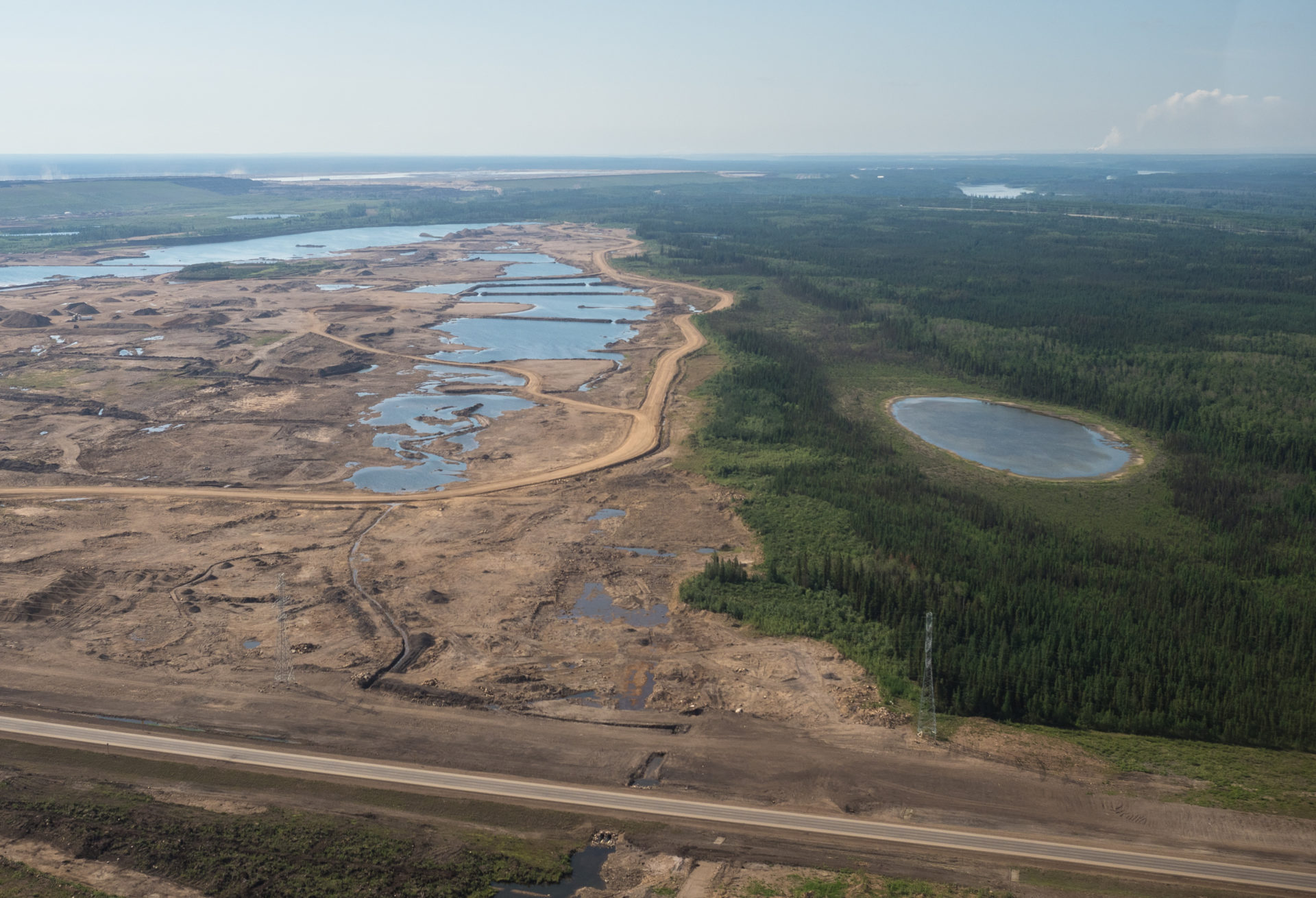
An oilsands operation butts up against boreal forest in northern Alberta. Photo: Louis Bockner / Sierra Club BC
From Thunder Bay, Ont., Rasevych has watched the development of the Great Bear Forest carbon project closely.
“It’s something they do as innovators and leaders — and they are very inspiring for First Nations leadership in northern Ontario to look at and identify potential for opportunities here,” Rasevych said.
There’s no question that there are plenty of opportunities for Indigenous communities to build an economy around Great Bear-inspired protection of carbon sinks such as forests and wetlands. Canada boasts 2.7 million square kilometres of boreal forest, with 70 per cent of Indigenous communities located in forested regions.
Indeed, Indigenous-led, nature-based carbon offsets could be a pathway toward reconciliation — if they’re done right. (Australia’s Aboriginal Carbon Fund is working with the First Nations Energy and Mining Council in Canada to bring the concept here.)
“Given the overlap of Indigenous territories and carbon sinks in Canada, it is unlikely that nature-based solutions could be widely implemented without upholding Indigenous rights to lands and resources and respecting Indigenous governance and knowledge systems in climate change policy,” says a recent paper published in the Canadian science journal FACETS.
Sault of Anwaatin stresses the core challenge in bringing more carbon offset projects online is the matter of Indigenous jurisdiction.
He said many carbon-rich areas remain under provincial governance, and the only way to move forward on the issue is to honour the spirit and intent of treaties, resolve outstanding land claims and implement the United Nations Declaration on the Rights of Indigenous Peoples.
‘It’s like paradise for us’: the Cree Nation’s fight to save the Broadback Forest
John Cutfeet, former band councillor for Kitchenuhmaykoosib Inninuwug First Nation in northwestern Ontario and research fellow at the Yellowhead Institute, agreed: “All those activities like conservation and managing carbon sequestration are done and are premised on the fact that government owns the land.”
“But Indigenous people have said ‘no, we never gave up the land in those treaties, we need to share.’ As long as that whole notion that Indigenous people have no land is in place, that’s one of the biggest challenges that we’re going to have to overcome.”
Sault recommended the creation of agreements to ensure Indigenous people are the beneficiaries of revenues generated from offset programs — including a separate certification for offsets from Indigenous-managed lands, with explicit co-benefits such as Indigenous Guardian programs for fire management and pest control, or cultural revitalization including youth.
“Nature-based solutions policy and projects that are advanced without the partnership or consent of Indigenous Nations can generate significant opposition from communities who consider such actions as ‘carbon colonialism’ and a threat to inherent land rights,” noted the FACETS paper.
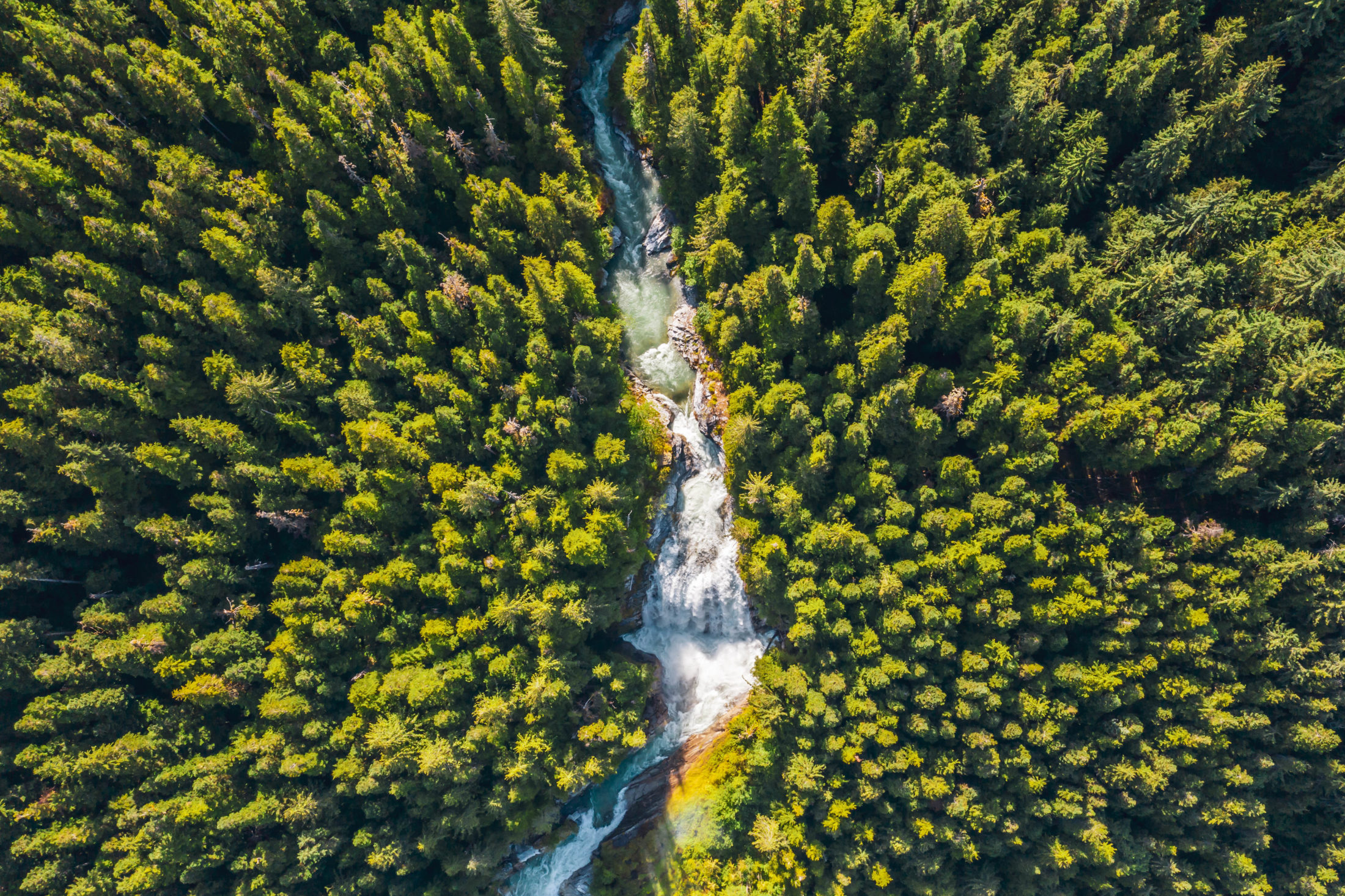
A river flows through an area of the Great Bear Rainforest known as the Kitlope. An innovative carbon offset program has helped to fund conservation in the forest. Photo: Alex Harris / Raincoast
Rasevych works with three Indigenous communities — Eabametoong, Marten Falls and Aroland First Nations — that collectively harvest and manage the Ogoki Forest, about 400 kilometres northeast of Thunder Bay.
He said the First Nations are looking to take the next step to explore an offset project around more ecologically sustainable logging but currently lack capacity to conduct a feasibility study and create an up-to-date inventory of the stored carbon, biodiversity and harvesting volumes in the region. Without that, Rasevych said it’s impossible for communities to properly evaluate the economic trade-offs between commercial forestry and carbon offsetting.
Some money was available for First Nations to get started on this work through Ontario’s carbon pricing framework — until it was cancelled. The scrapping of the cap-and-trade system, Rasevych said, pretty well put an end to the funding for communities interested in developing offset programs.
A year after the Ford government cancelled the cap-and-trade system, a team of scholars from the University of Guelph convened a gathering of representatives from First Nations, Indigenous communities and environmental groups from across the country to hash out the impediments and opportunities in Indigenous-led conservation and carbon storage.
Mary-Kate Craig, a PhD candidate at the University of Guelph studying Indigenous carbon markets and one of the authors of the FACETS paper, helped to host the gathering. She explained more than a dozen key barriers that were identified by participants, including: a lack of clarity about how to actually make carbon offsets work, absence of carbon markets to participate in, and concerns around financial and organizational capacity of Indigenous communities.
There are also hard-to-meet requirements for verifying carbon offset projects that can be a hindrance to them moving forward, she said. The “additionality” requirement, for example, means proponents have to prove protection or restoration of a forest, grassland or wetland could only have happened through the offset project and not by any other means. So, if there’s no threat, there’s no offset.
And the project proponent has to ensure the carbon emissions mitigated by the project aren’t simply displaced elsewhere — a form of “carbon leakage.” So the onus is on the proponent to prove managing its forest for carbon offsetting, for example, won’t just result in another area logged.
In order for the Great Bear Forest Carbon Project to come to fruition, the province had to sign an “atmospheric benefit sharing agreement” with the nine First Nations behind the offset project. B.C. is so far the only province or territory to sign one of these agreements that establish clear rules about Indigenous ownership of carbon that’s sequestered by their land, and their subsequent ability to sell carbon credits.
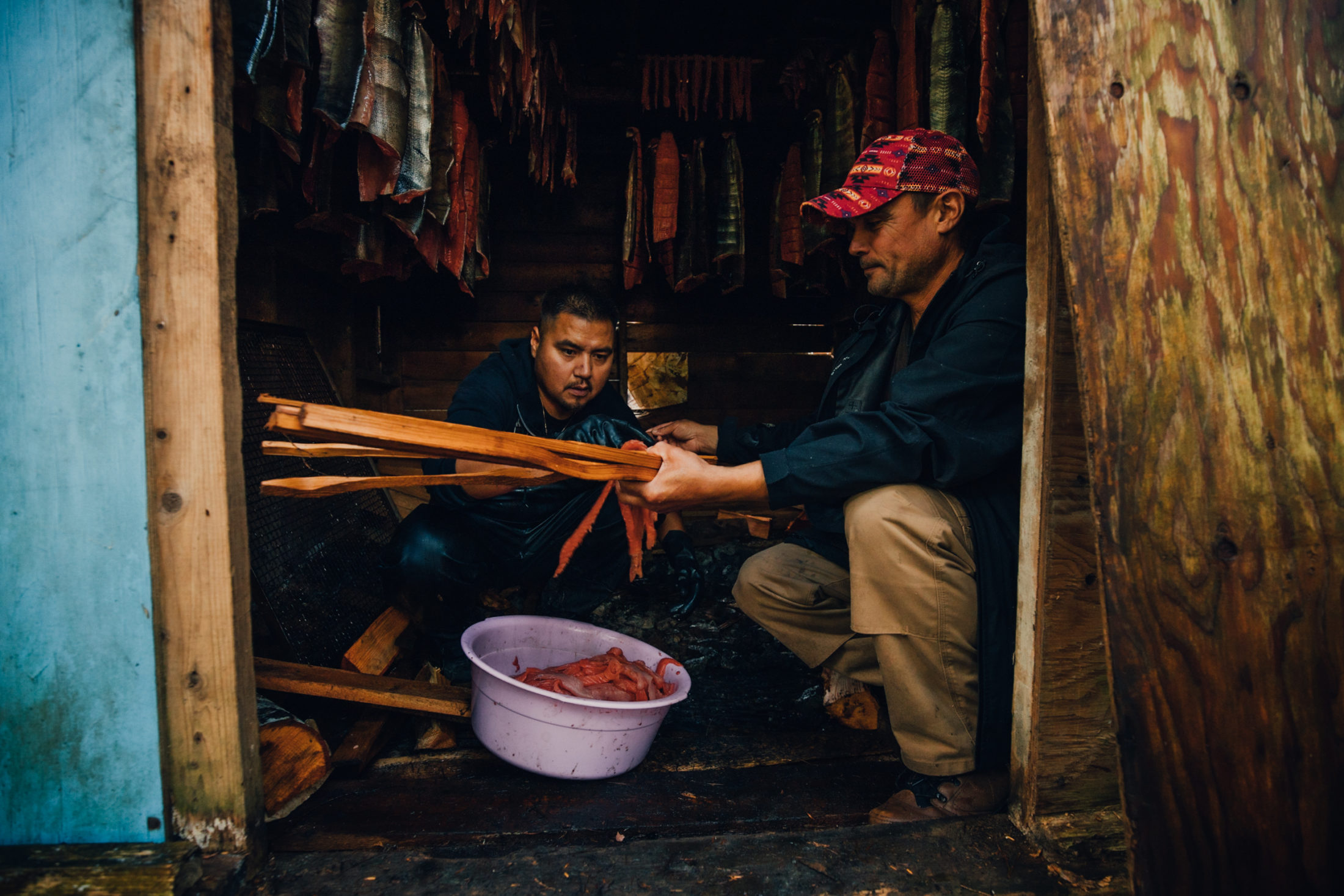
Heiltsuk Guardian Watchman Jordan Wilson, right, prepares salmon during “Salmon Days” on Heiltsuk territory in Bella Bella, B.C. Photo: Louise Whitehouse / The Narwhal
It also lays out who gets the benefits. In the case of Great Bear, the Coastal First Nations agreement allocates 80 per cent of revenue from offsets to First Nations and 20 per cent to the province.
Other proposed projects are lacking this critical element.
Take the Poplar River First Nation on the eastern shore of Lake Winnipeg, for example. Over the last several decades it has worked to conserve its traditional territory of Asatiwisipe Aki and collaborate with three nearby First Nations to establish Pimachiowin Aki, a 29,040-square-kilometre UNESCO World Heritage Site, in 2018.
A recent report by the International Institute for Sustainable Development explained that the area’s forests and wetlands store an estimated total of 444 million tonnes of carbon. Establishing a “payment for ecosystem services agreement,” through which the provincial government pays the nation for its work to conserve this carbon sink on a per-hectare basis, would enable a massive range of opportunities for the First Nation, including species and water monitoring, land-based education and jobs in fisheries, tourism and stewardship.
Establishing a carbon finance benefit-sharing agreement between Poplar River First Nation and the Government of Manitoba would mean offsets for the carbon sequestered by these lands could be sold to finance the First Nation’s work.
“They have so much information around the carbon, and they have done so much work to try to create a functioning offset,” said Mary-Kate Craig, a PhD candidate at the University of Guelph studying Indigenous-led carbon markets.
Yet so far, Poplar River hasn’t been able to formalize a conservation economy, which Craig said is “to do with the provincial government not giving them what they need to actually create that as a project.”
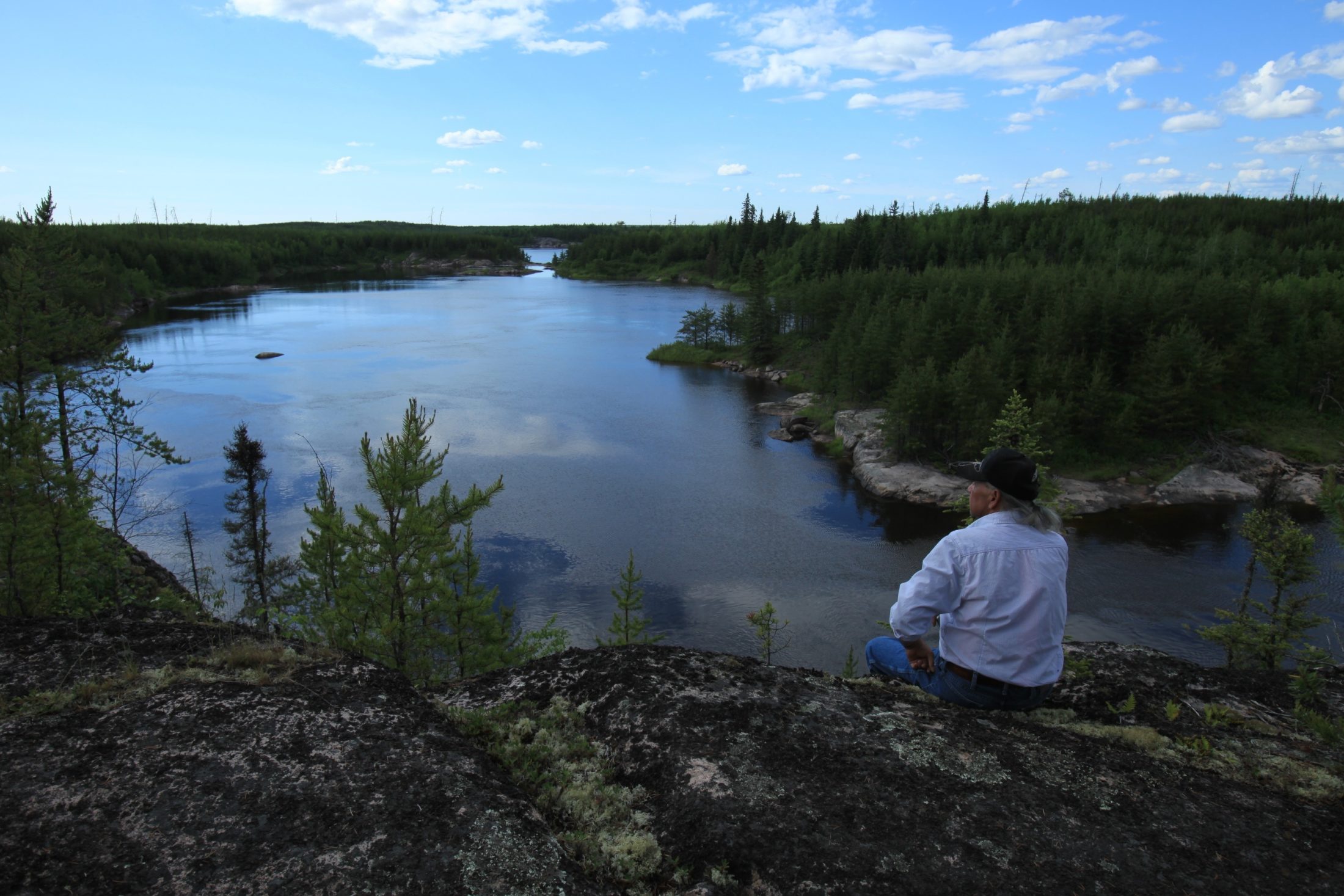
The International Institute for Sustainable Development found the forests and wetlands in Pimachiowin Aki store an estimated total of 444 million tonnes of carbon. Photo: Hidehiro Otake / UNESCO
Many people say that offsets need to be part of an energy transition plan in conjunction with large-scale emissions reductions in sectors like oil and gas extraction and transportation.
Shane Moffatt of Greenpeace Canada pointed to Prime Minister Justin Trudeau’s pledge to plant two billion trees with revenues from the Trans Mountain Pipeline as a worst-case scenario.
“They need to be in addition to drastic emissions reductions, not to somehow offset or balance them out,” he said. “That’s not going to get us anywhere and is just shuffling chairs on the Titanic.”
“Understandably, conservation interests have been pushing for recognition of the importance of maintaining the carbon sinks that we now have: wetlands and forests and so forth,” said Gibson of the University of Waterloo. “That’s fine, but we need to be much more ambitious than that if we’re going to get to net-zero.”
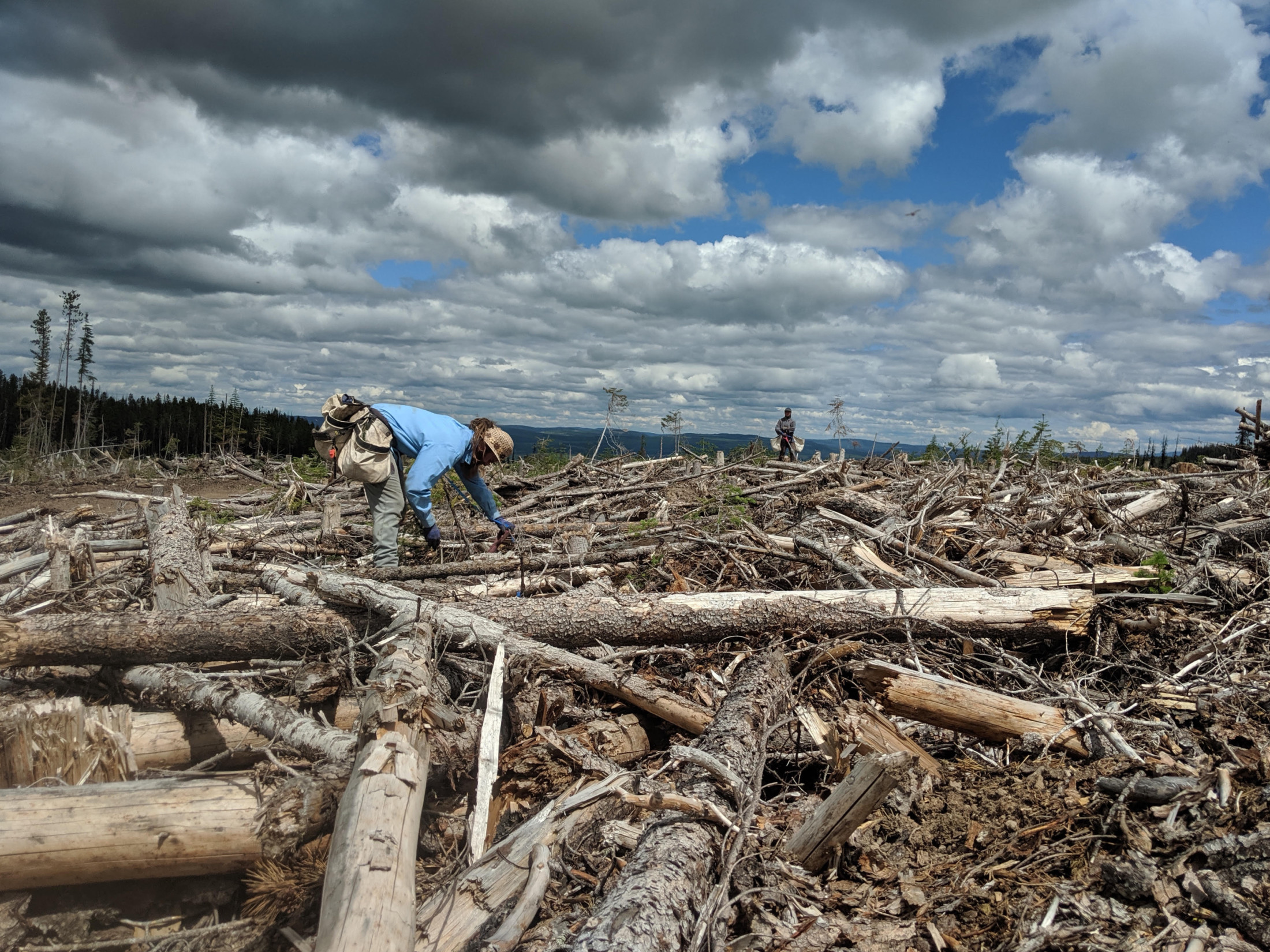
Prime Minister Justin Trudeau once promised to plant trees with revenues from the Trans Mountain oilsands pipeline, a strategy that doesn’t sit well with many environmentalists. Photo: Johann Simundsson
In 2011, three years after buying 136,000 acres of forest from a logging company in B.C.’s Selkirk Mountains, the Nature Conservancy of Canada sold its first round of carbon credits. That first sale through the Darkwoods Forest Carbon Project was for 700,000 credits — equivalent to 700,000 tonnes of carbon dioxide — and netted more than $4 million on the voluntary market. The revenue from credits went back into conservation work on the property — and it continues to each year.
Pallant of Ecotrust Canada has been working for a decade and a half on forest carbon offset projects, trying to develop protocols and “clear the path” for successful projects.
He gives the example of the Cheakamus Community Forest, a collaboration between Ecotrust, Brinkman Climate, the town of Whistler and the First Nations of Squamish and Lil’watt.
With so much action both from the federal government and Indigenous governments, Rasevych of the Thunder Bay-based Anishnawbe Business Professional Association is convinced the movement toward carbon offsetting only requires a few more sparks to ignite.
“There needs to be a starting point,” he said. “There needs to be one First Nation or a group of First Nations that work together on pushing that agenda. Because it is something that our communities have a common vision about — and it’s something that could assist us globally.”
— With files from Emma Gilchrist
The Carbon Cache series is funded by Metcalf Foundation. As per The Narwhal’s editorial independence policy, the foundation has no editorial input into the articles.
Get the inside scoop on The Narwhal’s environment and climate reporting by signing up for our free newsletter. On a warm September evening nearly 15...
Continue reading
How can we limit damage from disasters like the 2024 Toronto floods? In this explainer...

From disappearing ice roads to reappearing buffalo, our stories explained the wonder and challenges of...

Sitting at the crossroads of journalism and code, we’ve found our perfect match: someone who...
